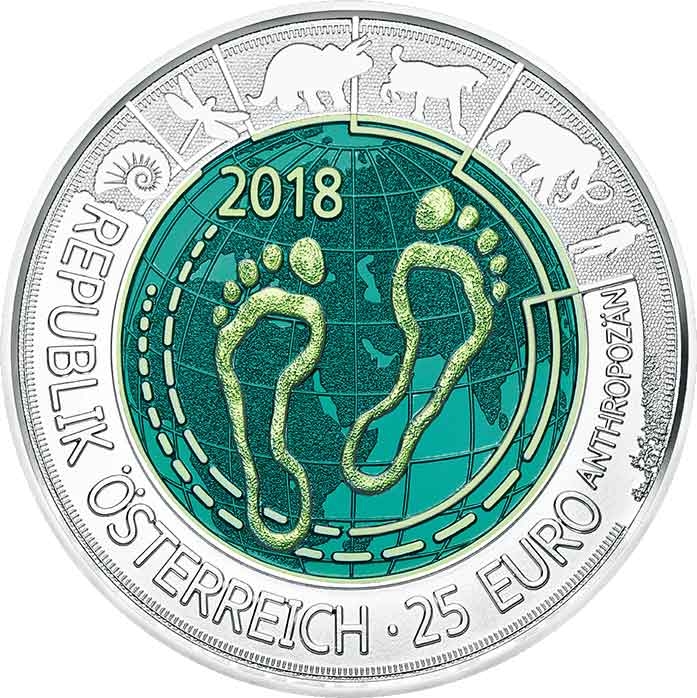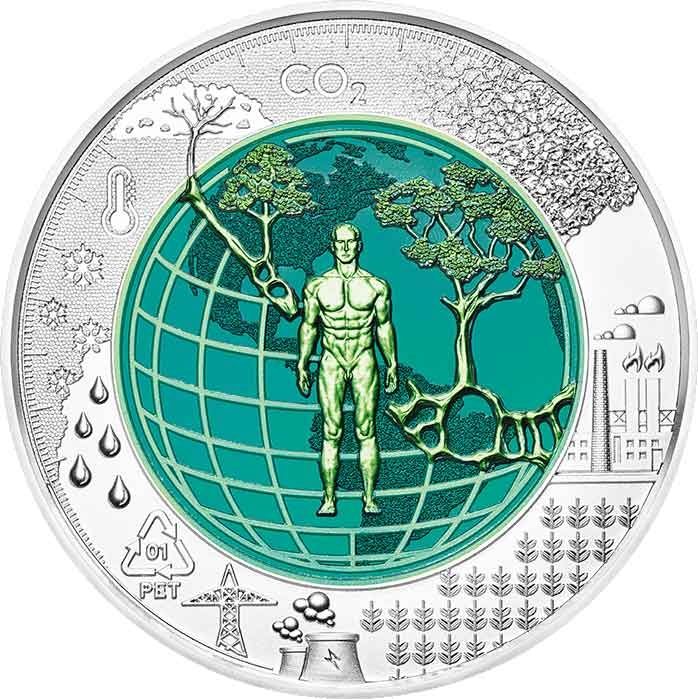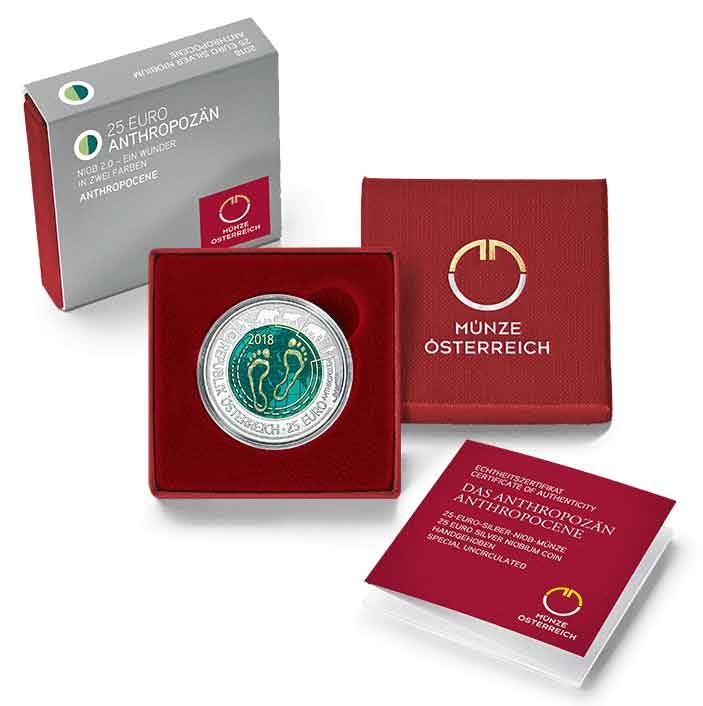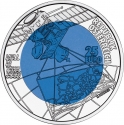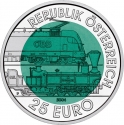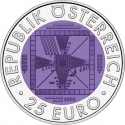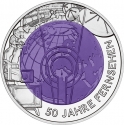You are about to finish your registration. Please check your mailbox (including spam folder). There should be a letter with a confirmation link. Check setting to make sure that your e-mail address is correct.
Send letter againDescription
The footprint of humanity on the Earth is unfortunately a massive one. So big that experts now agree that humanity’s impact on the planet is so profound that it is time to declare a new geologic epoch – the Anthropocene. Examples of this impact are the radioactive elements dispersed across the planet by nuclear testing, plastic pollution and the soot produced by fossil-fuel power stations. These and other adverse effects are illustrated in exquisite detail on Anthropocene, the 2018 edition of our ever-popular Silver Niobium coins.
Beginning at the end of the Ice Age, some 11,700 years ago, the subdivision of the Quaternary geologic period, during which all human civilization developed, is known as the Holocene. The partly scientific, partly philosophical concept of the Anthropocene is effectively a continuation of the Holocene under a symbolic new name. Different shades of green are used in the coin’s niobium core to illustrate this concept. Humanity and its huge footprint on the planet dominate either side of the coin’s two-tone green niobium core, while humanity’s adverse effects on planet Earth are shown in the silver outer ring of Anthropocene.
The coin contains 9 g of 900 Fine silver in its outer ring and 6.5 g of 998 pure niobium. Designed by Mag. Helmut Andexlinger and Herbert Wähner, the coins are boxed with a certificate of authenticity and enclosed in a slipcase.
Obverse

|
Depicts creatures from various eras: an Ammonite fossil (Triassic), a member of the family of insects called Tarsophlebiidae (Jurassic); a Triceratops (Cretaceous); a saber-toothed cat (Tertiary); a mammoth and a human (Quaternary), as well as the word Anthropocene. 2018 |
|---|---|
Reverse

|
On the niobium inner disc on the reverse, the focus is on the human being. A nude male human is flanked by two deciduous trees. In the background is a globe featuring both North and South America (the Western Hemisphere). CO2 |
| Edge |
25 Euro
Silver Niobium Coin
Anthropocene
Subscribe series
KM# 3289
Silver Niobium Coin
Anthropocene
Characteristics
| Type | Commemorative Issue (Non-circulating) |
| Material | Bi-Metallic |
| Ring | Silver |
| Center | Niobium |
| Weight | 16.5 g |
| Diameter | 34 mm |
| Thickness | 2.55 mm |
| Shape |
|
| Alignment | Medal |
| Mint |
Austrian Mint
|
